Lidl-Trek shows off 'secret weapon' after Pedersen’s victory and successful spring, but how important is it really?
Cycling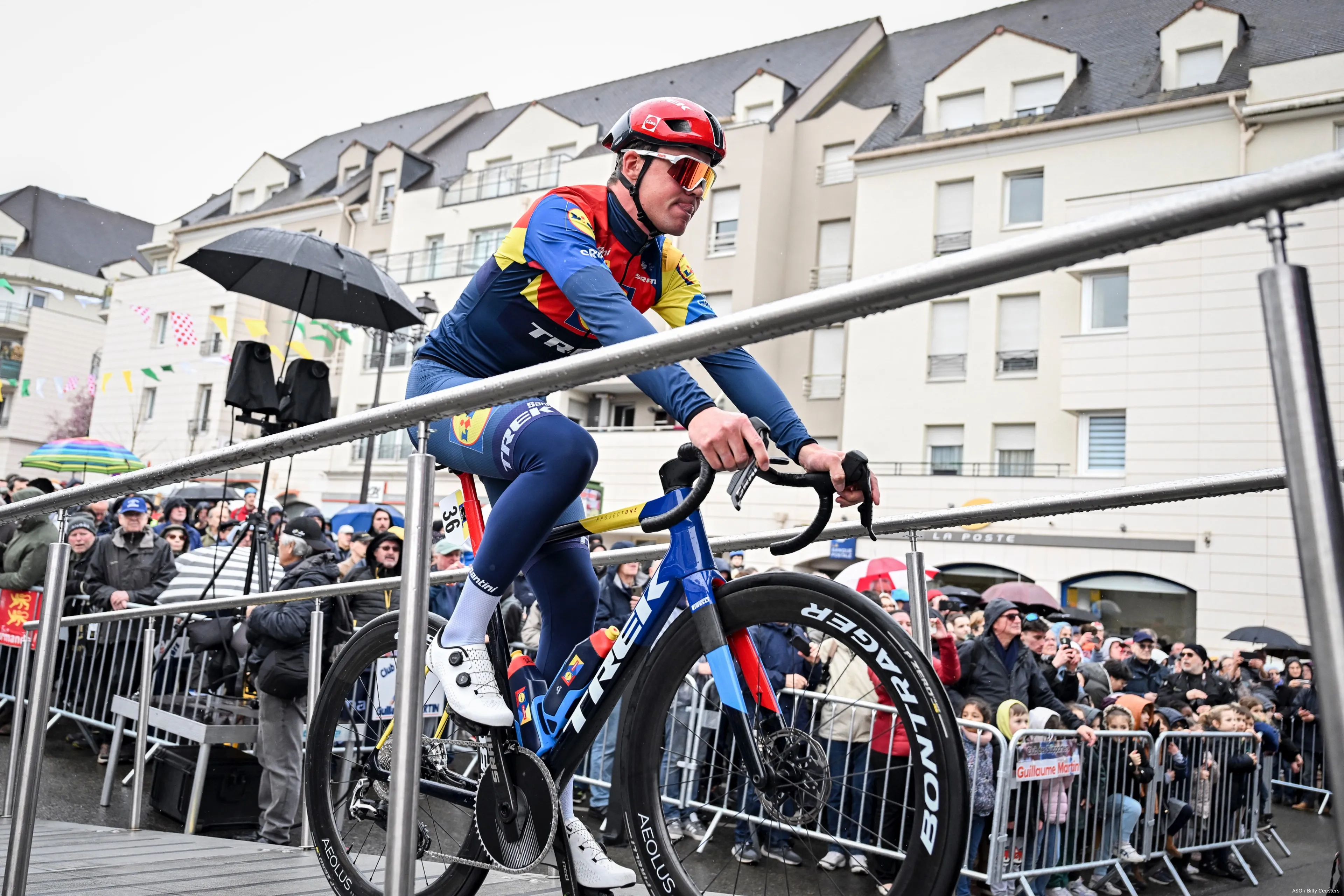
At the Lidl-Trek, it seems they have their act together, just like last spring. The team saw Mads Pedersen win Gent-Wevelgem for the second year in a row, and they were also present at the Opening Weekend and the E3. In addition to a group of excellent riders, the American team claims that the SRAM setup makes a significant difference. But is that really true?
On Monday, Lidl-Trek released a buzzing press release explaining the so-called SRAM 1x RED XPLR AXS. Lidl-Trek is now using the large front chainring. With this, the team said goodbye to a double chainring, or in other words, a large and small front chainring. The idea was triggered after Technical Support Manager Glen Leven took to the gravel in Luxembourg in August of 2024 with only a large front chainring. "The bike changed gears incredibly well, even under high pressure."
Leven decided to study it. After presenting the options to the team, Pedersen agreed. He tested the Trek Madone bike with a single chainring in October and was wildly enthusiastic. "And the feedback was immediately unbelievably good: How stable this rear derailleur is performing under loads, even on bad roads, and you can properly shift." Therefore, they also tested on the cobblestones in January, this time with cyclist Alex Kirsch. "They said we will never go back to 2x on the cobbles because this is insane how good it is."
Read more below the photo.
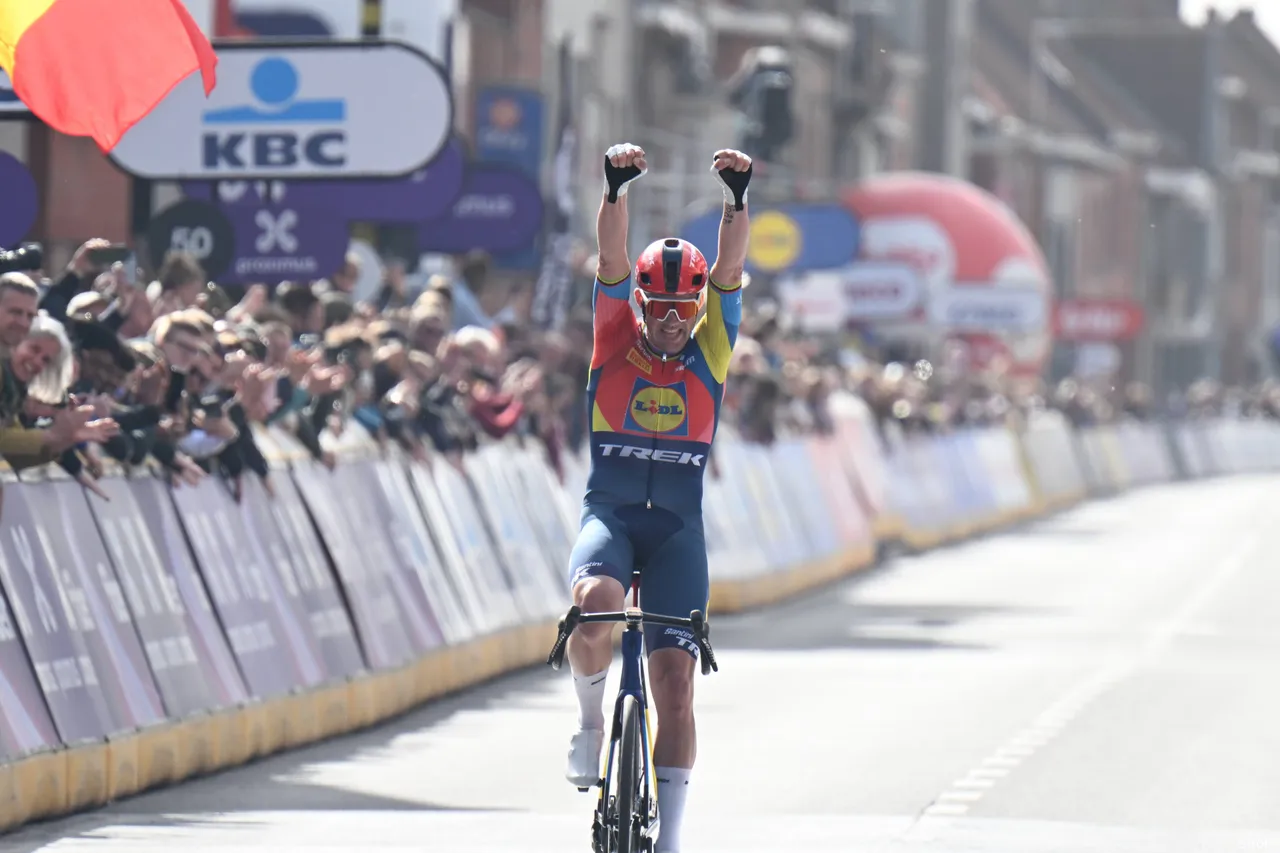
Lidl-Trek riders can choose their own setup
That sounds like a great step, but where does Lidl-Trek see the real advantages of a single chainring compared to a double? There is a reason why all the big names use them in the spring. "The biggest benefit of the 1x setup for Lidl-Trek is that it reduces risk. The menacing roads at races like Paris-Roubaix and Tour of Flanders have ended many promising rides due to mechanicals. One less chainring to shift means one less thing that can go wrong. The XPLR rear derailleur is built to be simple, fast, and resistant to impact."
So we are less likely to see Pedersen and co. standing on the side of the road, but beyond that? Does such a setup also yield watts or time? Lidl-Trek emphasizes that the '13-speed 10-46 cassette' gives riders exactly the same gear options as a double, but: "The biggest downside of riding 1x is the lack of gear options. But in the fastest gears, where riders largely reside during the relatively flat cobbled Classics, there should be no issues racing at a comfortable cadence. With a 54- or 56-tooth chainring, they'll have all the same gears available to them that they'd also use on, say, a Grand Tour sprint stage," the team says.
Read more below the photo.
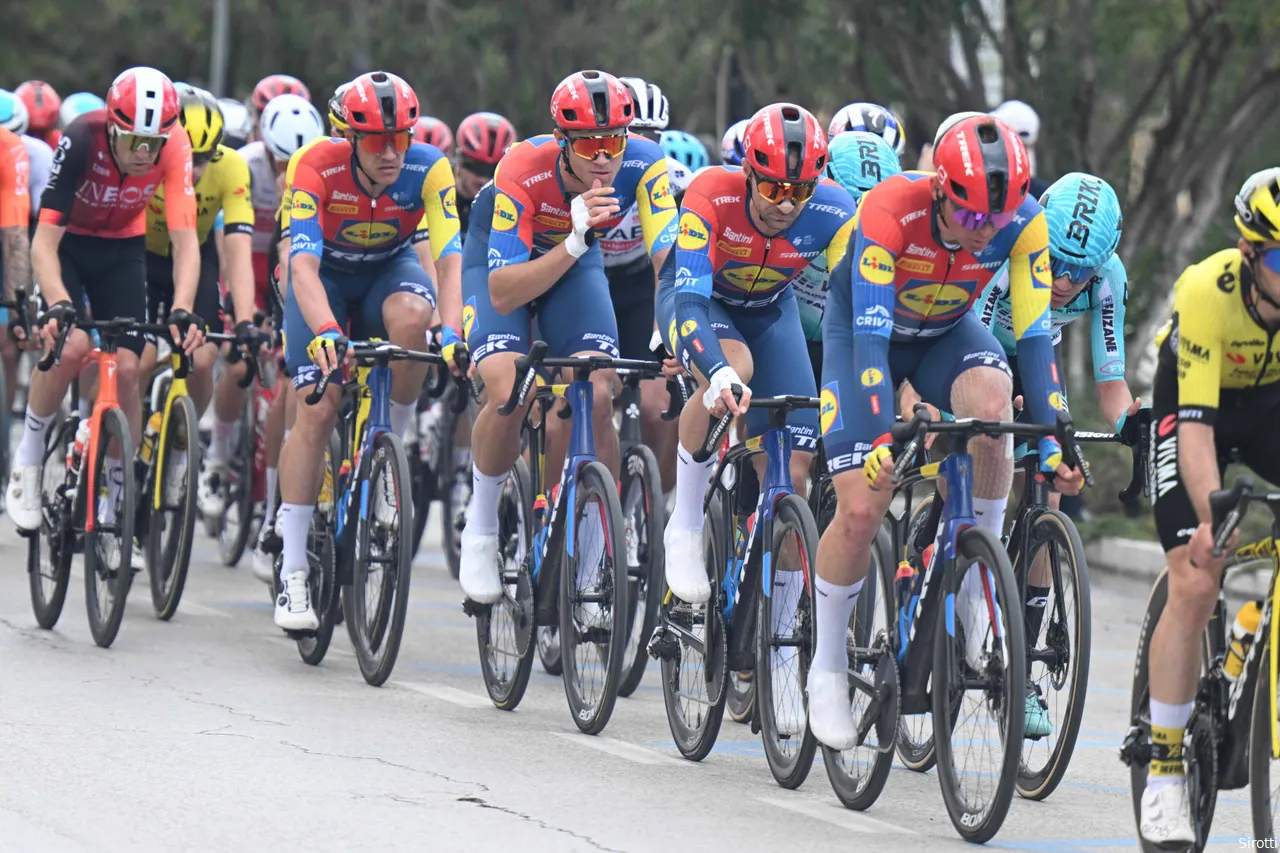
Lidl-Trek also mentions a ‘few seconds’ of time loss
For the Tour of Flanders, the question is whether Pedersen will gain an advantage using the single chainring. Lidl-Trek says: "On the Oude Kwaremont, Lidl-Trek riders may lose a few precious seconds due to the lack of options in the gears, but the XPLR will give them peace of mind. Leven: 'But Mads told me that in the past, he felt like he’d lose two-three seconds shifting from the small chainring to the front, just making sure that the chain is on before we accelerate again. YSo now we maybe lose three seconds to accelerate again, but we don’t have to worry about our chain not making it."
A wonderful story, because how important is that 'secret weapon' of Lidl-Trek really? "It's up to the riders. If they want double chainrings, the Lidl-Trek staff will provide them." This spring, after intensive testing, the team has opted for the XPLR for the athletes. Mads and the others are convinced that the advantages far outweigh the disadvantages. The Trek Madone is one of the few bicycles that is compatible with both set-ups, making it easy to switch. "We can combine all possible set-ups with each other at SRAM, we have all the options," says Leven. "We are the first ones who are using it. And if anybody is doing the same next year, they’re just copying our idea."
Read also
IDL-productions
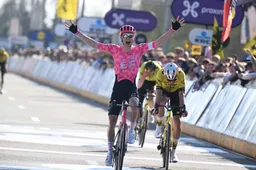
"I think it's only human": Benoot explains his thoughts after van Aert's near miss in Dwars door Vlaanderen

Jorgenson points out Visma's weak spot after Dwars door Vlaanderen debacle: "We’re honest about it"

Preview Tour of Flanders 2025 | The Big Three, Four or Five, or an outsider?

Preview Dwars door Vlaanderen 2025 | Pedersen and Van Aert return to the race where things went wrong last year

Laurence Pithie and Red Bull combative despite false start: "I'm better than ever"
Latest Cycling News

"I think it's only human": Benoot explains his thoughts after van Aert's near miss in Dwars door Vlaanderen

Longo Borghini shows who the top favorite for the Tour of Flanders is with a magnificent solo in Dwars door Vlaanderen

Extremely disappointed Wout van Aert says he has to make 'silly' statements after his blunder in Dwars door Vlaanderen

Jorgenson points out Visma's weak spot after Dwars door Vlaanderen debacle: "We’re honest about it"

Powless single-handedly cracked Visma | LaB's trio code: "Never in a million years"
Popular Cycling News

Fabio Jakobsen halts cycling career: flow limitation in the iliac artery is cause for concern

UAE Emirates-XRG rectifies communication error regarding strong Tour of Flanders team built around Tadej Pogacar

Preview Dwars door Vlaanderen 2025 | Pedersen and Van Aert return to the race where things went wrong last year

Preview Tour of Flanders 2025 | The Big Three, Four or Five, or an outsider?

Visma | Lease a Bike saw a different Van Aert after Dwars door Vlaanderen crash, but tests and E3 proved that changing style is not an option
Latest Comments
- Such negative comments that are truly inappropriate and actually ridiculous. He sounds like an old man, bitter that he can't race anymore. Why can't he just be gracious? Or just shut up. Instead of howling for attention, in such a rude manner. Must be Dementia creeping in. We are all living in the Now. Records are there, and some are being broken, some are unapproachable. If he doesn't like it, and it makes him sick, maybe he ought start watching some other sport. Don't want the old mans health to be upset.
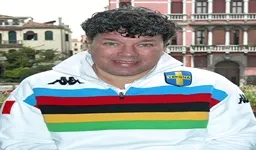 reemmo031-03-2025
reemmo031-03-2025 - Roger De Vlaeminck inspires me to create a new beer: "Bitter Old Twat Belgian".JackInhof31-03-2025
- Shoot, I'll ride it for 1/10 of what his pay for that day is😅Veganpotter30-03-2025
- What is this? The Lance Armstrong daily cheaters channel? I could care less about Johan and Lance the seven times cheater. Greg Lemond was right all along, Why don't you write about that instead of these two knuckleheads.velodrone28-03-2025
- Are we all doomed to hear from Lance Armstrong and Johan bruneel until the end of time? It's not enough the stain they left on cycling? Do we have to see that shadow forever?bigyakman26-03-2025
- I am not sure if it is the hardest to win. In Flanders and Roubaix well before the finish the Peleton will be decimated and the race will normally be won by the best rider of the day or maybe 2nd or 3rd in case of a mechanical or unlucky break especially in case of Roubaix. In San Remo just before the finish there will still be several riders in contention and they are hard to ditch. For the best riders it is a race hard to win since it is not so selective. But if you are not a top 5 rider but still a top 10 rider this race is your best change to win. You will see more Milan San remo Winners with only 1 monument win than any other monumentsJoostmehrtens19-03-2025
- "fap fap fap oh Lance oh oh OHHHHHHH" again. Does he pay you to dredge up people with nice things to say about him? He was an giant a$$hole to people. It is a fact. Whatever his contrition about the doping, he is unapologetic about being a giant a$$hole to people. (Why yes, I do only login to complain. *I* am however only a giant a$$hole to people who laud giant a$$holes.)ericjensenridesbikes25-02-2025
- Remco is still very young. And injuries can absolutely keep you from overdoing it and getting worse. The recent Remco accident didn't keep him from being able to ride a recumbent inside. Wout's knee is a different story thoughVeganpotter23-01-2025
- Van der Poel style is winning by a half a lap and leading the race from the end of the second lap.
 Barnes127420-01-2025
Barnes127420-01-2025 - If she thinks talent alone will put her there she will not see many podium finishes much less a GC finish.....work as a team utilizing tactics to consistently be at the top.Germanrazor10-01-2025


